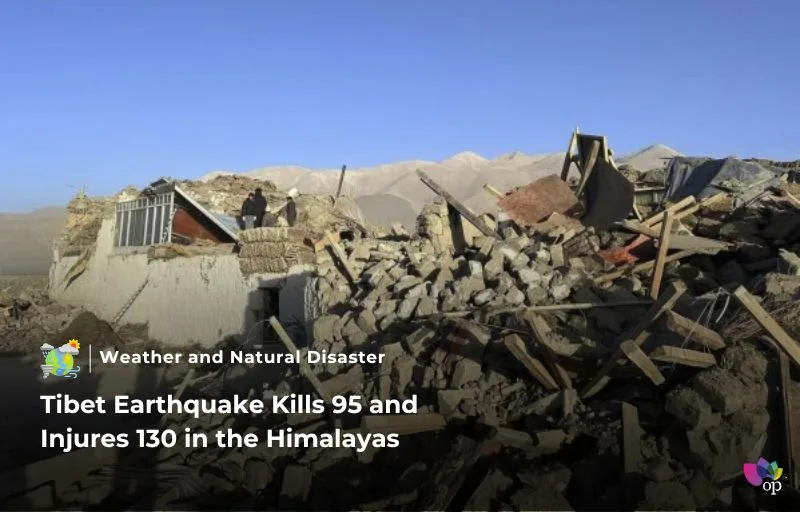A powerful 6.8 magnitude earthquake struck Tibet on Tuesday (7 January), resulting in the deaths of at least 95 people and injuring 130 others. The quake hit at 9:05 a.m. (local time), with its epicenter located in Tingri, a rural county near the northern gateway to the Everest region. The depth of the earthquake was recorded at 10 km (6.2 miles) by the China Earthquake Networks Centre, while the U.S. Geological Service reported the magnitude as 7.1. The Shigatse region in Tibet, home to around 800,000 people, was heavily impacted by the tremors.
The earthquake’s tremors were felt across the southwestern parts of China, as well as in neighboring Nepal and northern India, which are all prone to seismic activity due to the collision of the Indian and Eurasian tectonic plates. In Nepal, the National Disaster Risk Reduction and Management Authority (NDRRMA) reported that the tremors were felt in seven hill districts along the Tibet border. However, no loss of life or property has been reported from the Nepalese side so far, although authorities have mobilized local police, security forces, and authorities to gather further information.
In Tibet, emergency response efforts are ongoing, with more than 1,500 local firefighters and rescue workers deployed to the affected areas. Chinese President Xi Jinping has ordered that all-out search and rescue efforts be carried out to minimize casualties, properly resettle affected people, and ensure their safety and comfort as the region prepares for the winter. The authorities are also focusing on providing necessary supplies to the survivors, including shelter, clothing, and bedding.
In total, around 22,000 relief items have been dispatched to the quake-hit areas, including cotton tents, coats, quilts, and folding beds. These efforts aim to assist those affected by the earthquake and alleviate the hardships faced by the survivors in the wake of this devastating natural disaster. Rescue operations continue as authorities work to assess the full extent of the damage and provide ongoing support to the impacted communities.
References


 العربية
العربية 简体中文
简体中文 Français
Français Deutsch
Deutsch עִבְרִית
עִבְרִית हिन्दी
हिन्दी Italiano
Italiano 日本語
日本語 Русский
Русский Español
Español

Thank you for your sharing. I am worried that I lack creative ideas. It is your article that makes me full of hope. Thank you. But, I have a question, can you help me?